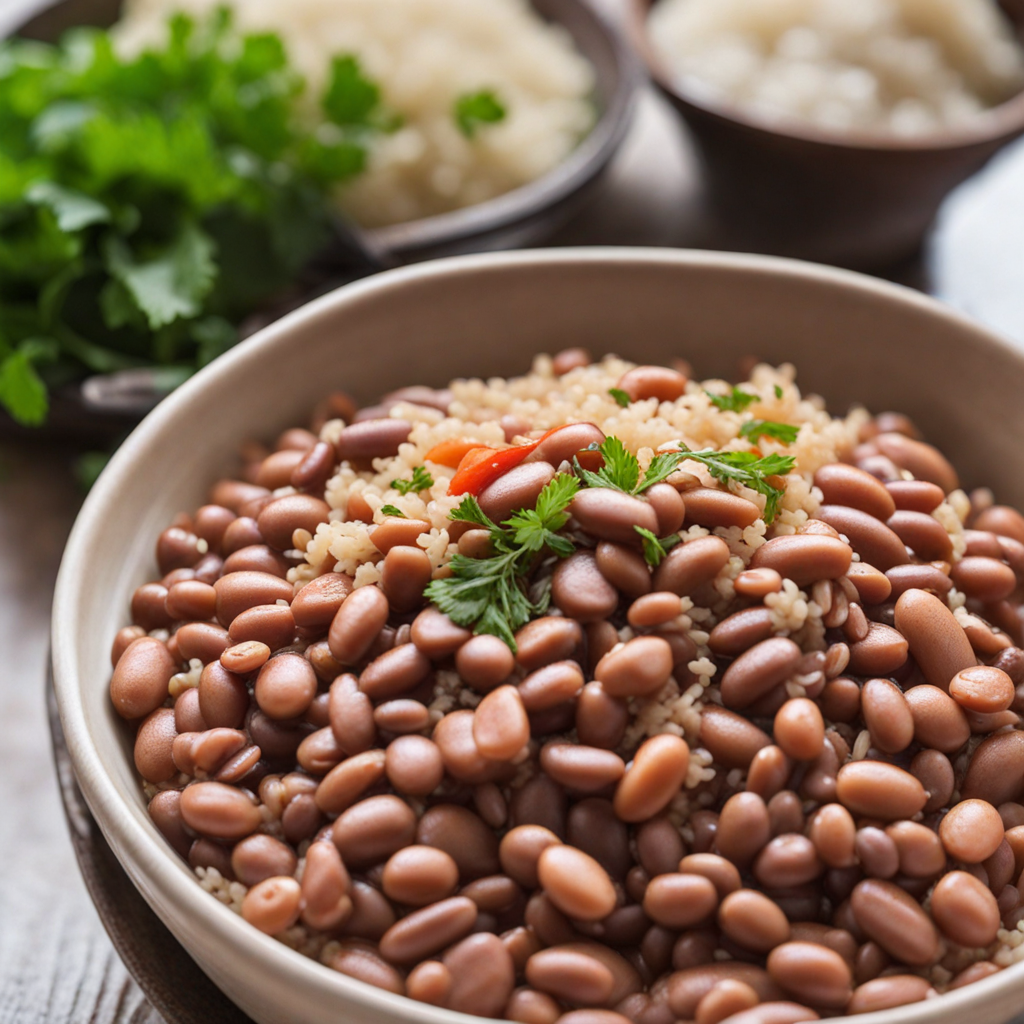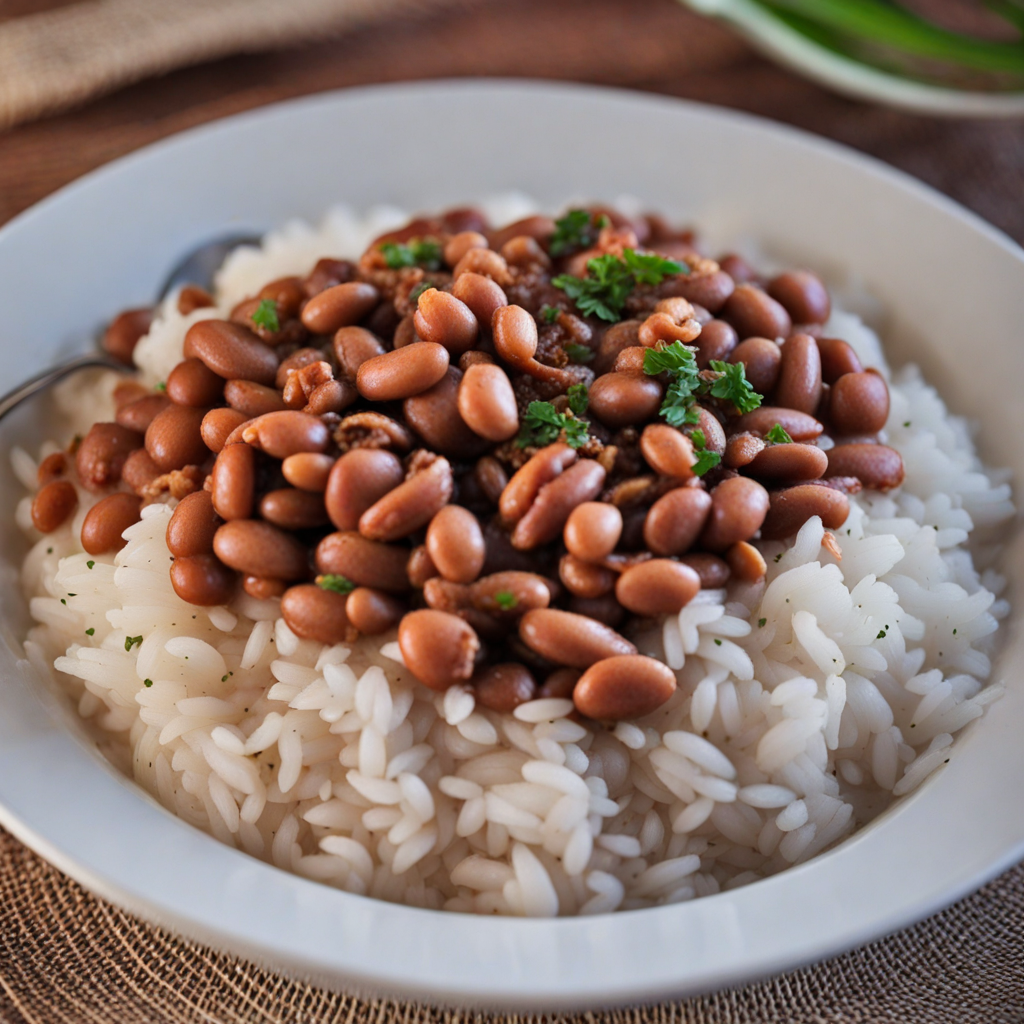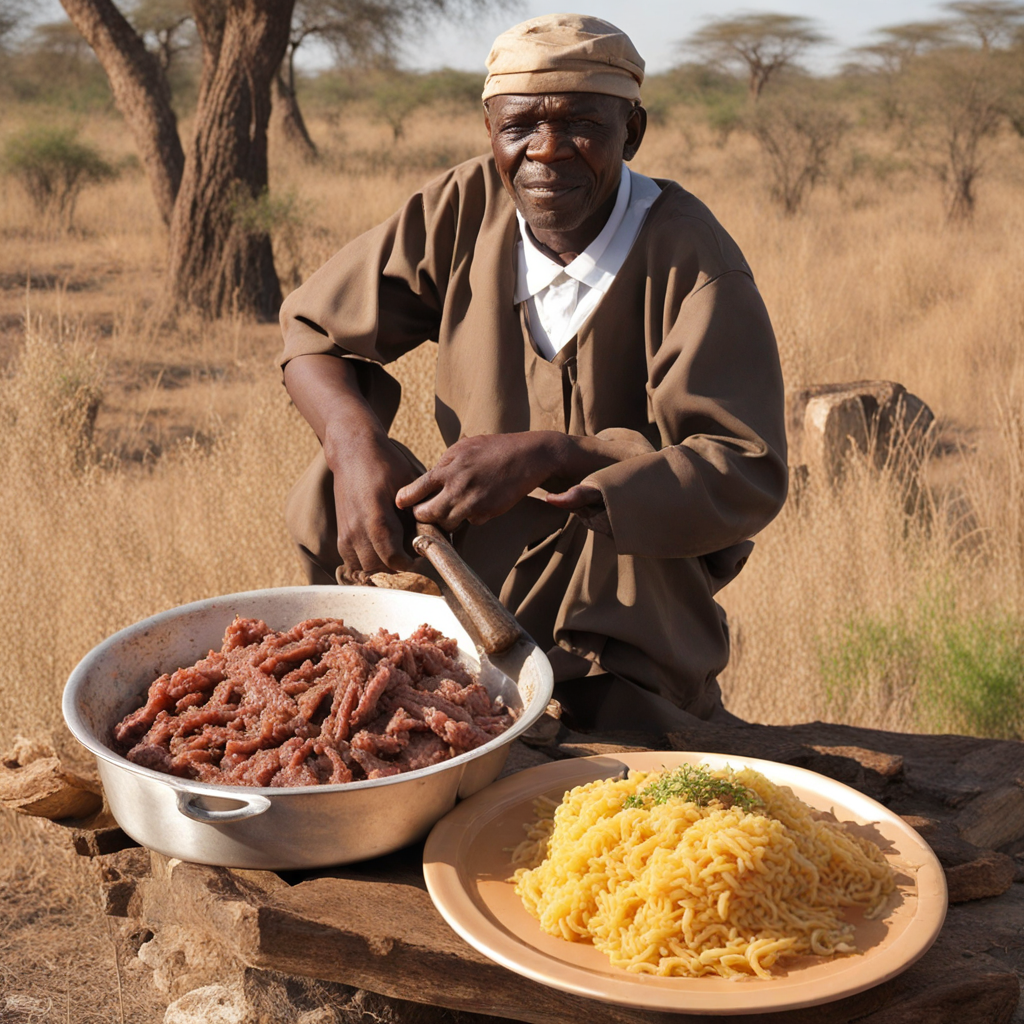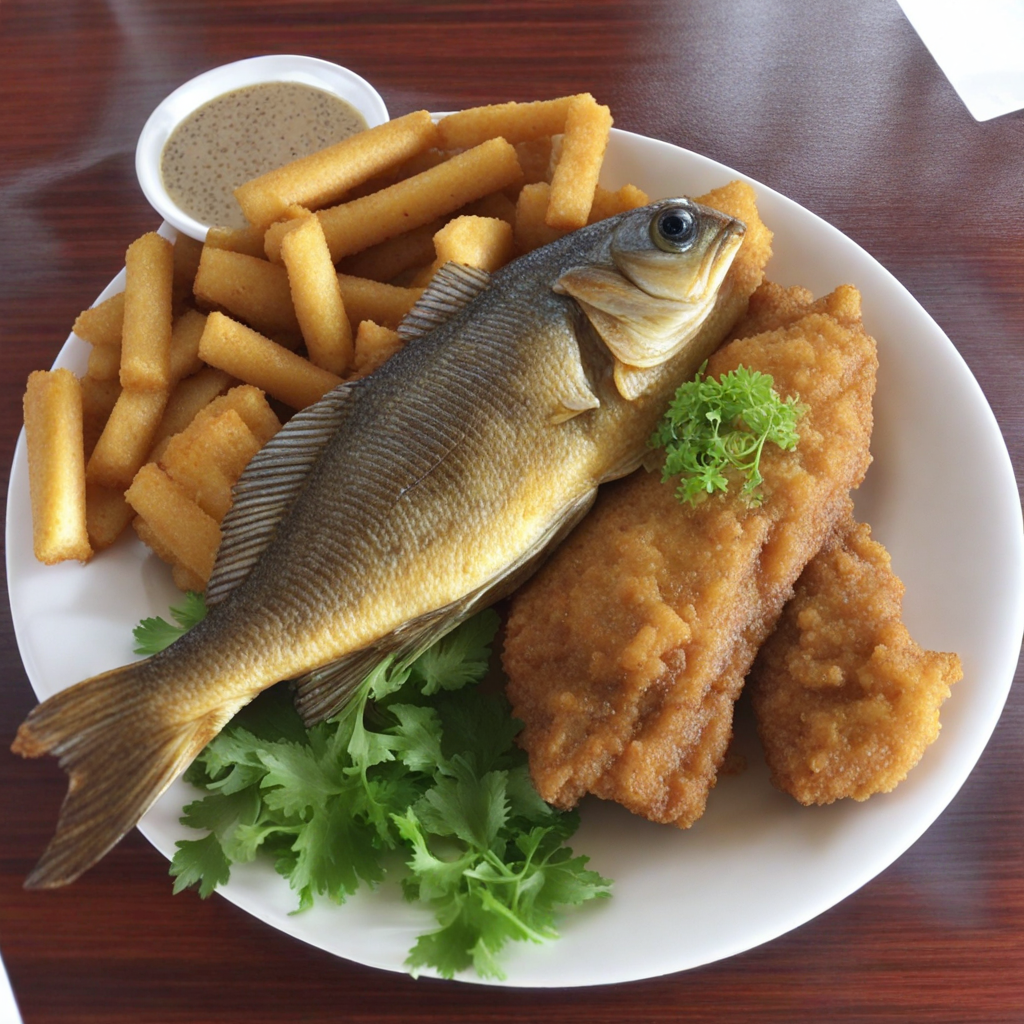Beans and Rice
Beans and Rice, a staple dish in Botswana, embodies the essence of comfort food while showcasing the simplicity and richness of local ingredients. This dish typically features a combination of hearty legumes, often black-eyed peas or kidney beans, simmered to perfection and infused with aromatic spices. The beans are cooked until tender, allowing their natural flavors to meld beautifully with the added ingredients, creating a nourishing and satisfying bite that is both hearty and wholesome. Accompanying the beans is a generous serving of rice, which serves as the perfect canvas to soak up the vibrant flavors of the dish. The rice is often fluffy and lightly seasoned, providing a delightful contrast to the creamy texture of the beans. In some variations, the rice may be cooked with a hint of onion or garlic, enhancing its flavor profile and making each mouthful a delightful experience. This combination not only fills the belly but also warms the soul, making it a beloved choice for both everyday meals and special occasions. What sets Botswanan Beans and Rice apart is the potential for personalization and regional variations. Some recipes incorporate seasonal vegetables, adding color and nutrition, while others may include a sprinkle of fresh herbs or a dash of chili for an extra kick. The dish is often enjoyed alongside traditional accompaniments like chutneys or stews, allowing for a wonderful fusion of flavors that reflect the diverse culinary heritage of Botswana. Each serving tells a story of the land and the people, inviting you to savor the unique tastes and culture of this vibrant nation.
How It Became This Dish
Ditloo le Raisi: A Culinary Journey Through Botswana #### Origins and Ingredients Ditloo le Raisi, often referred to as "rice and beans," is a beloved dish originating from Botswana, a landlocked country in Southern Africa known for its rich cultural heritage and diverse culinary traditions. The name "Ditloo le Raisi" comes from the Setswana language, where "ditloo" refers to beans and "raisi" translates to rice. The dish embodies the essence of Botswana's agrarian lifestyle, where staple foods are often simple yet nourishing, reflecting the resourcefulness and resilience of the local communities. The primary ingredients of Ditloo le Raisi are white rice and a variety of beans, such as cowpeas, black-eyed peas, or even lentils. These legumes are not only a rich source of protein but also a staple in the diets of many Batswana. The dish is often seasoned with onions, tomatoes, and a blend of spices that can vary according to regional preferences. In some households, the addition of meat—typically beef or chicken—enhances the dish's flavor, making it a more substantial meal. #### Cultural Significance In Botswana, food is deeply intertwined with identity and tradition. Ditloo le Raisi is more than just a meal; it is a symbol of communal gatherings, family celebrations, and cultural continuity. Traditionally, this dish has been served during significant events such as weddings, funerals, and communal feasts, where it acts as a unifying element that brings people together. The act of sharing food is a fundamental aspect of Batswana culture, underscoring values of hospitality, kinship, and community. Moreover, Ditloo le Raisi reflects Botswana's agricultural practices and the importance of subsistence farming. Many families grow their own beans and rice, leading to a profound connection between the food they consume and the land they cultivate. This relationship fosters a sense of pride and sustainability, as families not only feed themselves but also preserve their cultural heritage through traditional farming methods passed down through generations. #### Development Over Time The evolution of Ditloo le Raisi can be traced back through various historical, social, and economic changes in Botswana. The introduction of rice to the region can be attributed to the influence of trade routes that connected Southern Africa with Asia. As rice cultivation spread, it became a staple alongside indigenous grains like sorghum and millet. The incorporation of beans, which are native to Africa, further enriched the dish, making it a perfect example of culinary fusion. During the colonial period, Botswana faced significant socio-economic challenges that impacted food availability and agricultural practices. Many Batswana were forced to abandon their traditional farming methods in favor of cash crops, leading to a decline in local food varieties. However, the resilience of the people allowed them to adapt and innovate, leading to the survival and continued popularity of traditional dishes like Ditloo le Raisi. In the post-independence era, which began in 1966, Botswana experienced a renewed interest in cultural identity and heritage. The government and various NGOs promoted initiatives to encourage the consumption of local foods, recognizing the importance of traditional dishes in fostering national pride. As a result, Ditloo le Raisi gained prominence not only as a comfort food but also as an emblem of national identity. Today, Ditloo le Raisi is celebrated in both urban and rural settings across Botswana. In cities, it is often served in restaurants and at social gatherings, showcasing its versatility and appeal to diverse palates. Meanwhile, in rural communities, it remains a staple on family tables, prepared in homes where traditional cooking methods are cherished. The dish has also garnered attention on social media platforms, where food enthusiasts share their unique recipes and adaptations, further popularizing it among younger generations. #### Contemporary Variations and Global Recognition As Botswana continues to evolve, so too does the preparation and presentation of Ditloo le Raisi. Contemporary chefs and home cooks alike are experimenting with the dish, incorporating modern culinary techniques and flavors. For instance, some variations may include the addition of coconut milk for creaminess, or the use of spices like curry powder to introduce new dimensions of flavor. These adaptations reflect a broader trend in global cuisine, where traditional dishes are reimagined to cater to evolving tastes and dietary preferences. Moreover, Ditloo le Raisi has begun to capture the attention of food enthusiasts beyond Botswana's borders. International food festivals and culinary events have featured this dish, highlighting its cultural significance and unique flavor profile. The growing interest in African cuisine has paved the way for Batswana chefs to showcase their traditional meals, including Ditloo le Raisi, on global platforms. #### Conclusion In summary, Ditloo le Raisi is much more than a simple rice and beans dish; it is a rich tapestry of Botswana's history, culture, and culinary evolution. From its humble origins as a staple food to its modern-day adaptations and global recognition, Ditloo le Raisi embodies the spirit of the Batswana people—resilient, resourceful, and deeply connected to their land and traditions. As Botswana continues to navigate the complexities of modernization and globalization, Ditloo le Raisi remains a poignant reminder of the importance of food in shaping identity and community. It serves as a delicious link to the past while also embracing the future, ensuring that this cherished dish will endure for generations to come.
You may like
Discover local flavors from Botswana







